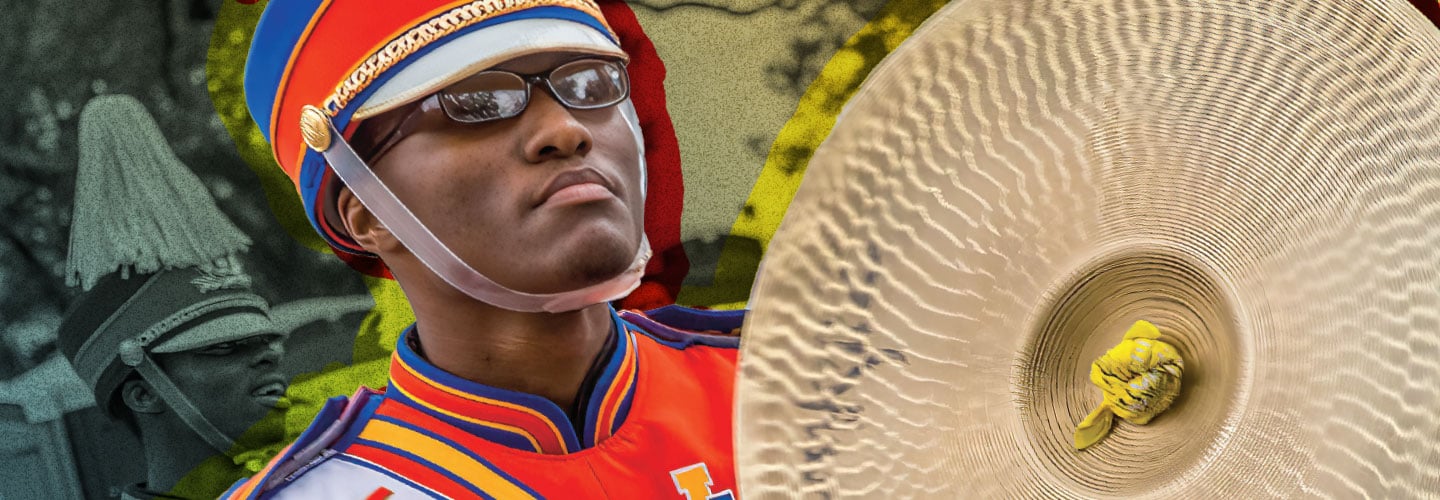Whether you’re watching your school’s marching band perform at halftime or listening to a rock band on YouTube, pay attention and you’ll likely catch it: the crash of cymbals. These metal instruments are a key component of many types of music, from classical to pop.
Cymbals are deceptively simple-looking percussion instruments—ones that produce sound waves when struck. But “they are actually one of the more complicated instruments in a lot of ways,” says Robert Owen, a physicist who teaches musical acoustics—the science of sound—at Oberlin College in Ohio. Cymbals can have different thicknesses, sizes, and shapes. They may have a surface that’s smooth, hammered, or etched with grooves. All these variations have a big effect on the sound cymbals produce.
To find out more about the science of cymbals, Science World spoke with the Avedis Zildjian (AH-vah-dis ZIL-jee-uhn) Company, the world’s oldest cymbal manufacturer. It’s been crafting cymbals for 400 years! Following a closely guarded secret process, the company creates cymbals that can accentuate any kind of music, from the steady beat of a rock song to the dramatic finale of a march.
When you watch your school’s marching band at halftime, you’ll hear it. And when you listen to a rock band on YouTube, the sound is there too. It’s the crash of cymbals. These metal instruments are a key part of many types of music. They’re common from classical to pop.
Cymbals are percussion instruments, struck to produce sound waves. They may look simple. But “they are actually one of the more complicated instruments in a lot of ways,” says Robert Owen, a physicist at Oberlin College in Ohio. He teaches musical acoustics, the science of sound. Cymbals can have different thicknesses, sizes, and shapes. Their surface can be smooth, hammered, or carved with grooves. These differences have a big effect on the cymbals’ sound.
Science World spoke with the Avedis Zildjian (AH-vah-dis ZIL-jee-uhn) Company about the science of cymbals. This is the world’s oldest cymbal manufacturer. It’s been crafting cymbals for 400 years! The company follows a closely guarded secret process. It can create cymbals for any kind of music, from a rock song’s steady beat to a march’s dramatic finish.

